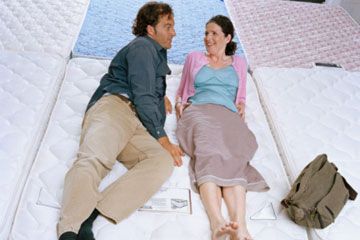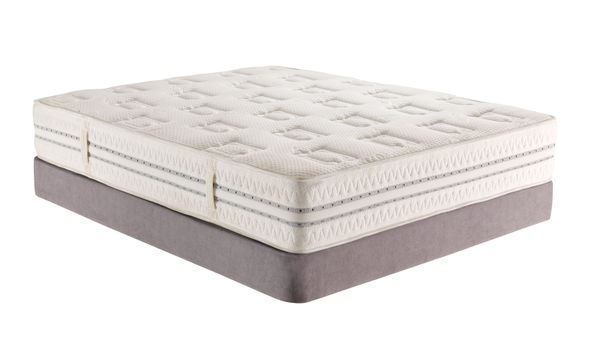
If you're getting a better night's sleep than your parents ever did, it's probably because you have a lot more elbow room in bed. Mattress sizes are available in more variety than ever before, a welcome change particularly for those tall people whose feet used to hang off the end of the bed. As a result, more people are opting to go big and go home (to bed, that is).
Before we get into the nitty-gritty of why and how bed sizes have morphed over time, here's a handy guide on current dimensions of the most commonly purchased mattress sizes:
Advertisement
- Crib: 27 by 52 inches (68.5 by 132 centimeters)
- Twin: 39 by 75 inches (96.5 by 190.5 centimeters)
- Twin XL: 39 by 80 inches (96.5 by 203.5 centimeters)
- Full (Double): 54 by 75 inches (134.5 by 190.5 centimeters)
- Queen: 60 by 80 inches (152.5 by 203.5 centimeters)
- King: 76 by 80 inches (193 by 203.5 centimeters)
- California King: 72 by 84 inches (183 by 213.5 centimeters)
Statistics show that Americans are buying bigger mattresses than they used to. In 2018, 41.4 percent of mattresses shipped in the U.S. were queens; 17.8 percent were kings; 17.2 percent were twins and 14.8 were full, according to the International Sleep Products Association (ISPA). Back in 2010, 37 percent were queens; 10.2 percent were kings; 24.7 percent were twins and 18 percent were full. (Specialty mattresses like the California king account for the rest of the total.)
One reason for the move to larger bed sizes is good old-fashioned capitalism, says Dr. Neil Kline, D.O., spokesperson for the American Sleep Association. "With more manufacturers has come more competition. The low end for mattress prices has come down over the decades which has allowed people to get more mattress-size for the dollar," he says via email. The advent of online mattress stores has driven price points down even further, as they don't have nearly the overhead costs of brick and mortar stores.
Another benefit of larger mattresses is more comfort for two bodies occupying the same space. "It is normal to change positions many times during the night. The larger the mattress, the less likely that a bed partner will accidentally disrupt the other's sleep while shifting positions," Kline says.
Indeed, a standard double (full) bed only provides 2 feet, 3 inches (68 centimeters) of space per person. This is hardly enough room for the average-sized adult, but even less for those who are overweight or obese, which 39.8 percent of Americans are.
"The king-size mattress was introduced commercially after World War II and began to be heavily promoted during the 1950's and 1960's," says Kline. Word quickly got out about the joys of sleeping in a larger bed. "In the 1950's, king-size mattresses represented about 1 percent of mattress sales. This increased to over 10 percent in the 1960's," he adds.
Some manufacturers are even catering to people who prefer to keep a family bed (co-sleep with children) or like to snuggle up with furry friends. The Ace Collection, for example, offers mattresses ranging from the "Ace Size" model at 108 inches wide by 80 inches (274 centimeters by 203 centimeters) in length to the "Family Size," which is 144 inches long by 80 inches (366 by 203 centimeters) wide. Naturally, they offer frames and bedding to coordinate because where the heck else are you going to find products for a 9 or 12 foot bed?
Whether the Ace Collection styles are too much bed for you or you're already filling your online shopping cart, at least you have options, right? Because few things are more important than a good night's sleep.
Advertisement


